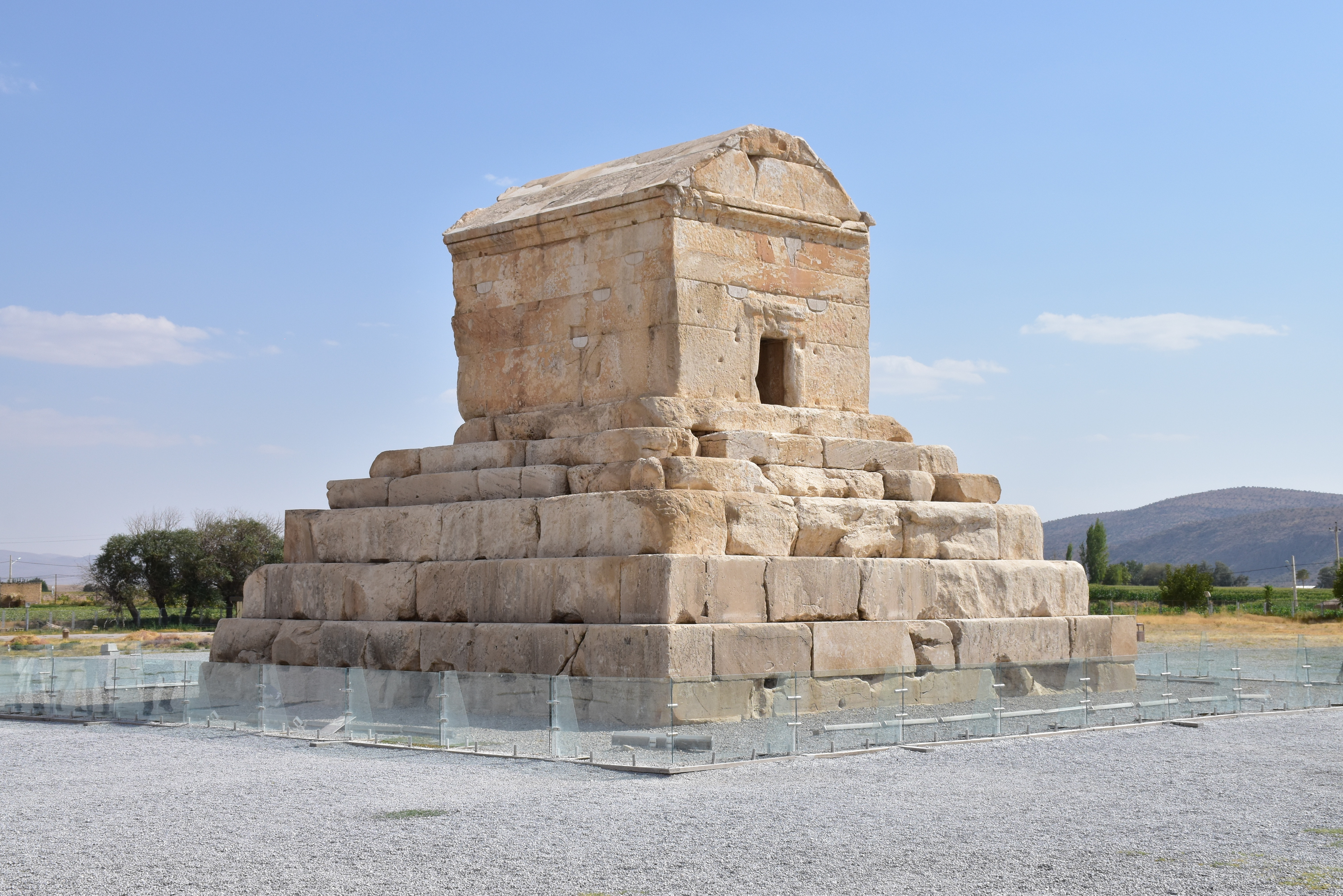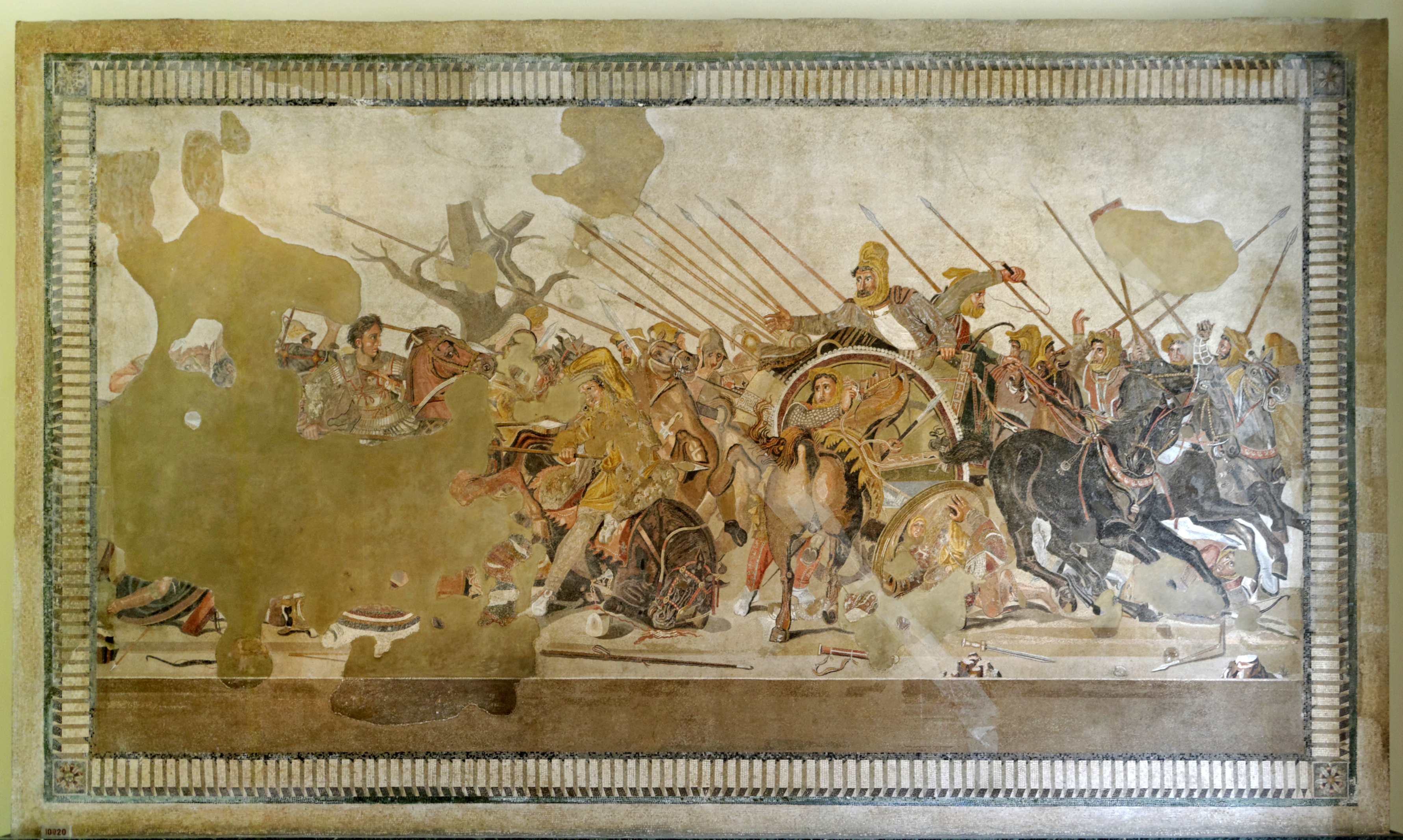|
Chorasmia (satrapy)
Chorasmia (Old Persian: рҗҺўрҗҺәрҗҺ рҗҺјрҗҸҖрҗҺ·рҗҺЎрҗҺ№ ''hUvДҒrazmiya'', рҗҺўрҗҺәрҗҺ рҗҺјрҗҸҖрҗҺ·рҗҺЎрҗҸҒ ''hUvДҒrazmiЕЎ'') was a satrapy of the Achaemenid Empire in Persia. Chorasmia had become part of the Achaemenid Empire before 522 BCE, and it seems to have been ruled by the satrap of Parthia. There exists an archaeological site in Kalaly-gyr, modern Kazakhstan, in a rectangular area 1,000 x 600 m surrounded by a defensive wall 15 m thick, and an Achaemenid-style palace at its center, all of which were unfinished, suggesting the Persians' departure from Chorasmia shortly after the beginning of the 4th century BC. By the time of the Persian king Darius III, it had already become an independent kingdom. Its king, Pharasmanes, concluded a peace treaty with Alexander the Great in the winter of 327/328 A.D/C.E. Chorasmia approximately corresponds to the modern-day region of Khwarezm Khwarazm (; Old Persian: ''HwГўrazmiya''; fa, Ш®ЩҲШ§ШұШІЩ…, ''XwГўrazm'' or ''XГўrazm'' ... [...More Info...] [...Related Items...] OR: [Wikipedia] [Google] [Baidu] |
Xerxes I Tomb Choresmian Soldier Circa 470 BCE
Xerxes ( ) may refer to: People * Xerxes I of Persia, "Xerxes the Great", reigned 486вҖ“465 BC * Xerxes II of Persia, briefly reigned 424 BC * Xerxes of Sophene, ruler of Sophene and Commagene, 228вҖ“201 BC * Xerxes (Sasanian prince), 6th-century prince and general * Xerxes (name), a list of people with the name Fiction, stage and video *''Il Xerse'', (in its 1660 French version, ''XerxГЁs''), Francesco Cavalli's opera of 1654 *''Xerse'', Giovanni Bononcini's opera of 1694 *''Serse'' (''Xerxes''), George Frideric Handel's opera of 1738 *''Xerxes'', novel by Louis Couperus * ''Xerxes'' (TV series), a Swedish TV series for children * ''Xerxes'' (graphic novel), a 2018 graphic novel by Frank Miller Other *''Xerxes The God-King'', a 2010 album by American rapper King Gordy *Xerxes Peak, a mountain in the Canadian Rockies *XerxesDZB, a Dutch professional football team based in Rotterdam *Roksan Xerxes, a series of record turntables from Roksan Audio (UK) *XerXeS, a denial-of-service ... [...More Info...] [...Related Items...] OR: [Wikipedia] [Google] [Baidu] |
Satrap
A satrap () was a governor of the provinces of the ancient Median and Achaemenid Empires and in several of their successors, such as in the Sasanian Empire and the Hellenistic empires. The satrap served as viceroy to the king, though with considerable autonomy. The word came to suggest tyranny or ostentatious splendour, and in modern usage refers to any subordinate or local ruler, usually with unfavourable connotations of corruption. A satrapy is the territory governed by a satrap. Etymology The word is derived via Latin from Greek ''satrГЎpes'' (), itself borrowed from an Old Iranian ''*khshathra-pa''. In Old Persian, which was the native language of the Achaemenids, it is recorded as ''khshathapavan'' (, literally "protector of the province"). The Median form is reconstructed as ''*khshathrapavan-''. It is cognate with Sanskrit ''kshetrapal'' (). The Biblical Hebrew form is ''aбёҘashdarpan'' , as found in . In the Parthian (language of the Arsacid Empire) and Middle Persia ... [...More Info...] [...Related Items...] OR: [Wikipedia] [Google] [Baidu] |
Achaemenid Empire
The Achaemenid Empire or Achaemenian Empire (; peo, рҗҺ§рҗҸҒрҗҸӮ, , ), also called the First Persian Empire, was an ancient Iranian empire founded by Cyrus the Great in 550 BC. Based in Western Asia, it was contemporarily the largest empire in history, spanning a total of from the Balkans and Egypt in the west to Central Asia and the Indus Valley in the east. Around the 7th century BC, the region of Persis in the southwestern portion of the Iranian plateau was settled by the Persians. From Persis, Cyrus rose and defeated the Median Empire as well as Lydia and the Neo-Babylonian Empire, marking the formal establishment of a new imperial polity under the Achaemenid dynasty. In the modern era, the Achaemenid Empire has been recognized for its imposition of a successful model of centralized, bureaucratic administration; its multicultural policy; building complex infrastructure, such as road systems and an organized postal system; the use of official languages across ... [...More Info...] [...Related Items...] OR: [Wikipedia] [Google] [Baidu] |
Persia
Iran, officially the Islamic Republic of Iran, and also called Persia, is a country located in Western Asia. It is bordered by Iraq and Turkey to the west, by Azerbaijan and Armenia to the northwest, by the Caspian Sea and Turkmenistan to the north, by Afghanistan and Pakistan to the east, and by the Gulf of Oman and the Persian Gulf to the south. It covers an area of , making it the 17th-largest country. Iran has a population of 86 million, making it the 17th-most populous country in the world, and the second-largest in the Middle East. Its largest cities, in descending order, are the capital Tehran, Mashhad, Isfahan, Karaj, Shiraz, and Tabriz. The country is home to one of the world's oldest civilizations, beginning with the formation of the Elamite kingdoms in the fourth millennium BC. It was first unified by the Medes, an ancient Iranian people, in the seventh century BC, and reached its territorial height in the sixth century BC, when Cyrus the Great fou ... [...More Info...] [...Related Items...] OR: [Wikipedia] [Google] [Baidu] |
Parthia (satrapy)
Parthia ( peo, рҗҺұрҗҺјрҗҺ°рҗҺә ''ParОёava''; xpr, рҗӯҗрҗӯ“рҗӯ•рҗӯ… ''ParОёaw''; pal, рҗӯҜрҗӯ«рҗӯ®рҗӯҘрҗӯЎрҗӯҘ ''Pahlaw'') is a historical region located in northeastern Greater Iran. It was conquered and subjugated by the empire of the Medes during the 7th century BC, was incorporated into the subsequent Achaemenid Empire under Cyrus the Great in the 6th century BC, and formed part of the Hellenistic Seleucid Empire following the 4th-century-BC conquests of Alexander the Great. The region later served as the political and cultural base of the Eastern Iranian Parni people and Arsacid dynasty, rulers of the Parthian Empire (247 BC вҖ“ 224 AD). The Sasanian Empire, the last state of pre-Islamic Iran, also held the region and maintained the seven Parthian clans as part of their feudal aristocracy. Name The name "Parthia" is a continuation from Latin ', from Old Persian ', which was the Parthian language self-designator signifying "of the Parthians" who were an Iranian people. I ... [...More Info...] [...Related Items...] OR: [Wikipedia] [Google] [Baidu] |
Kazakhstan
Kazakhstan, officially the Republic of Kazakhstan, is a transcontinental country located mainly in Central Asia and partly in Eastern Europe. It borders Russia to the north and west, China to the east, Kyrgyzstan to the southeast, Uzbekistan to the south, and Turkmenistan to the southwest, with a coastline along the Caspian Sea. Its capital is Astana, known as Nur-Sultan from 2019 to 2022. Almaty, Kazakhstan's largest city, was the country's capital until 1997. Kazakhstan is the world's largest landlocked country, the largest and northernmost Muslim-majority country by land area, and the ninth-largest country in the world. It has a population of 19 million people, and one of the lowest population densities in the world, at fewer than 6 people per square kilometre (15 people per square mile). The country dominates Central Asia economically and politically, generating 60 percent of the region's GDP, primarily through its oil and gas industry; it also has vast mineral ... [...More Info...] [...Related Items...] OR: [Wikipedia] [Google] [Baidu] |
Achaemenid Architecture
Achaemenid architecture includes all architectural achievements of the Achaemenid Persians manifesting in construction of spectacular cities used for governance and inhabitation (Persepolis, Susa, Ecbatana), temples made for worship and social gatherings (such as Zoroastrian temples), and mausoleums erected in honor of fallen kings (such as the burial tomb of Cyrus the Great). Achaemenid architecture was influenced by Mesopotamian, Assyrian, Egyptian, Elamite, Lydian, Greek and Median architecture. Boardman J. ''Persia and the West: An Archaeological Investigation of the Genesis of Achaemenid Art''. Thames & Hudson. 2000. p. 102-122. AndrГ©-Salvini B. ''Forgotten Empire: The World of Ancient Persia''. University of California Press. 2005. p. 54. Talebian M. H. ''Persia and Greece: The role of cultural interactions in the architecture of Persepolis-Pasargadae''. 2008. The quintessential feature of Persian architecture was its eclectic nature with foreign elements, yet produ ... [...More Info...] [...Related Items...] OR: [Wikipedia] [Google] [Baidu] |
Darius III
Darius III ( peo, рҗҺӯрҗҺ рҗҺјрҗҺ№рҗҺәрҗҺўрҗҸҒ ; grc-gre, О”ОұПҒОөбҝ–ОҝПӮ ; c. 380 вҖ“ 330 BC) was the last Achaemenid King of Kings of Persia, reigning from 336 BC to his death in 330 BC. Contrary to his predecessor Artaxerxes IV Arses, Darius was a distant member of the Achaemenid dynasty. During his early career, he was reportedly an obscure figure among his peers and first rose to prominence during the Cadusian expedition of Artaxerxes III in the 350s BC. As a reward for his bravery, he was given the Satrapy of Armenia. Around 340 BC, he was placed in charge of the royal "postal service," a high-ranking position. In 338 BC, Artaxerxes III met an abrupt end after being poisoned by the court eunuch and chiliarch (''hazahrapatish'') Bagoas, who installed his youngest son Arses on the throne. He only reigned for a few years, until Bagoas had him poisoned as well. Darius was subsequently installed on the throne and soon forced Bagoas to drink his poison after discovering that ... [...More Info...] [...Related Items...] OR: [Wikipedia] [Google] [Baidu] |
Pharasmanes Of Charasmia , a village in Markazi Province, Iran
{{dab, hndis ...
Pharasmanes or Parsman ( ka, бғӨбғҗбғ бғЎбғӣбғҗбғңбғҳ) may refer to: People *Pharasmanes I of Iberia, Georgian king *Pharasmanes II of Iberia, Georgian king *Pharasmanes III of Iberia, Georgian king *Pharasmanes IV of Iberia, Georgian king *Pharasmanes V of Iberia, Georgian king *Pharasmanes VI of Iberia, Georgian king Places *Parsman, Iran Farismaneh ( fa, ЩҒШұЩҠШіЩ…Ш§ЩҶЩҮ, also Romanized as FarД«smДҒneh; also known as FarasmДҒneh, FaresmДҒneh, and ParsmДҒn) is a village in Kharrazan Rural District, in the Central District of Tafresh County, Markazi Province, Iran Iran, ... [...More Info...] [...Related Items...] OR: [Wikipedia] [Google] [Baidu] |
Alexander The Great
Alexander III of Macedon ( grc, wikt:бјҲО»ОӯОҫОұОҪОҙПҒОҝПӮ, бјҲО»ОӯОҫОұОҪОҙПҒОҝПӮ, Alexandros; 20/21 July 356 BC вҖ“ 10/11 June 323 BC), commonly known as Alexander the Great, was a king of the Ancient Greece, ancient Greek kingdom of Macedonia (ancient kingdom), Macedon. He succeeded his father Philip II of Macedon, Philip II to the throne in 336 BC at the age of 20, and spent most of his ruling years conducting a lengthy military campaign throughout Western Asia and ancient Egypt, Egypt. By the age of thirty, he had created one of the List of largest empires, largest empires in history, stretching from Greece to northwestern Historical India, India. He was undefeated in battle and is widely considered to be one of history's greatest and most successful military commanders. Until the age of 16, Alexander was tutored by Aristotle. In 335 BC, shortly after his assumption of kingship over Macedon, he Alexander's Balkan campaign, campaigned in the Balkans and reasserted control ... [...More Info...] [...Related Items...] OR: [Wikipedia] [Google] [Baidu] |
Khwarezm
Khwarazm (; Old Persian: ''HwГўrazmiya''; fa, Ш®ЩҲШ§ШұШІЩ…, ''XwГўrazm'' or ''XГўrazm'') or Chorasmia () is a large oasis region on the Amu Darya river delta in western Central Asia, bordered on the north by the (former) Aral Sea, on the east by the Kyzylkum Desert, on the south by the Karakum Desert, and on the west by the Ustyurt Plateau. It was the center of the Iranian Khwarezmian civilization, and a series of kingdoms such as the Afrighid dynasty and the Anushtegin dynasty, whose capitals were (among others) Kath, Gurganj (now Konye-Urgench) and вҖ“ from the 16th century on вҖ“ Khiva. Today Khwarazm belongs partly to Uzbekistan and partly to Turkmenistan. Names and etymology Names Khwarazm has been known also as ''Chorasmia'', ''Khaurism'', ''Khwarezm'', ''Khwarezmia'', ''Khwarizm'', ''Khwarazm'', ''Khorezm'', ''Khoresm'', ''Khorasam'', ''Kharazm'', ''Harezm'', ''Horezm'', and ''Chorezm''. In Avestan the name is '; in Old Persian рҗҺўрҗҺәрҗҺ рҗҺјрҗҸҖрҗҺ·рҗ ... [...More Info...] [...Related Items...] OR: [Wikipedia] [Google] [Baidu] |






